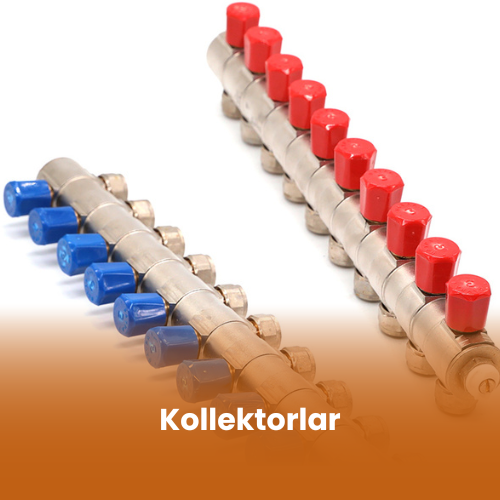Collectors and Their Types

Introduction
The word "collector" holds different meanings across various technical fields. In general, collectors are devices designed to gather, manage, and transmit energy or substances. They are widely used in everyday life, industrial sectors, and engineering systems.
Let’s dive deeper into this topic together!
Main Functions of Collectors
The main purpose of collectors is to ensure the control of energy or substances within a system. For example, in solar energy systems, collectors gather sunlight and convert it into thermal energy. In water and gas systems, they regulate and balance the flow.
Types of Collectors
Solar Collectors
Solar collectors convert sunlight into thermal or electrical energy.
-
Flat-plate Solar Collectors
These are the most common and basic type. Heat-conducting pipes are placed beneath a glass panel, and the sunlight heats the liquid inside. -
Vacuum Tube Collectors
These collectors create a vacuum inside the tubes to minimize heat loss, offering high efficiency even in winter. -
Concentrated Solar Collectors
This type uses mirrors to focus sunlight onto a single point, suitable for high-temperature systems.
Electrical Collectors
Used in electric motors, these collectors ensure the completion of the circuit and the transfer of electric current.
-
Commutator-type Collector
Transfers electricity through brushes and is used in DC motors. -
Slip Ring Collector
Used in AC systems to transmit continuous power to rotating parts.
Gas and Water Collectors
-
Water Collectors in Heating Systems
In hydronic heating systems, especially underfloor heating, they distribute heat evenly among pipes. -
Gas Distribution Collectors
Used to divide gas into multiple outlets and balance the pressure.
Mechanical and Automotive Collectors
-
Exhaust Collectors
Collect and direct exhaust gases from the engine into the exhaust pipe. Their efficiency impacts engine performance. -
Intake Collectors
Evenly distribute air or air-fuel mixtures to the engine cylinders.
Advantages and Disadvantages of Each Collector Type
| Collector Type | Advantages | Disadvantages |
|---|---|---|
| Solar Collectors | Energy-efficient, eco-friendly | High initial cost |
| Electrical Collectors | Compact, stable | Risk of wear and tear |
| Water and Gas Collectors | Easy regulation | Require periodic maintenance |
| Automotive Collectors | Boost performance | Need heat-resistant materials |
What to Consider When Choosing a Collector
-
Usage Area: Solar collectors for solar systems, automotive collectors for engines.
-
Material: Copper, stainless steel, or ceramic materials.
-
Installation conditions and technical support.
Installation and Maintenance of Collectors
Collectors perform optimally when installed by professionals. Annual maintenance, cleaning, and component inspection ensure long-lasting performance.
Overview of the Collector Market in Azerbaijan
Interest in solar collectors has grown in recent years in Azerbaijan. While local companies are entering the market, products imported from China and Turkey remain more common.
Prices vary depending on the type, power, and quality of the product — starting from 300 AZN up to 2000 AZN.
Conclusion and Recommendations
Collectors are an essential part of modern systems in terms of energy efficiency, cost-saving, and environmental impact. If you choose the right type and a quality model, you can use it for many years comfortably.
Remember: Choosing the right collector ensures both comfort and savings!
Frequently Asked Questions
-
What is a collector and where is it used?
A collector is a device that manages and transmits the flow of energy and matter. It is widely used in solar panels, engines, and water-gas systems. -
Which homes are suitable for solar collectors?
Mostly suitable for individual homes with sunny roofs and rural houses. -
What is the lifespan of collectors?
On average 10–20 years. This can be extended with regular maintenance.
